The Sultanate of Rûm, or Anatolian Seljuk State, was a collateral state found by Seljuk Turks in Anatolia. This region was known as Diyâr-i Rûm (Land of Rum) in Islamic world, and the local residents were called Rûm. It was because when the time that Muslim geographers arrived in Asia Minor, this land was still belonged to the (Eastern) Roman Empire.
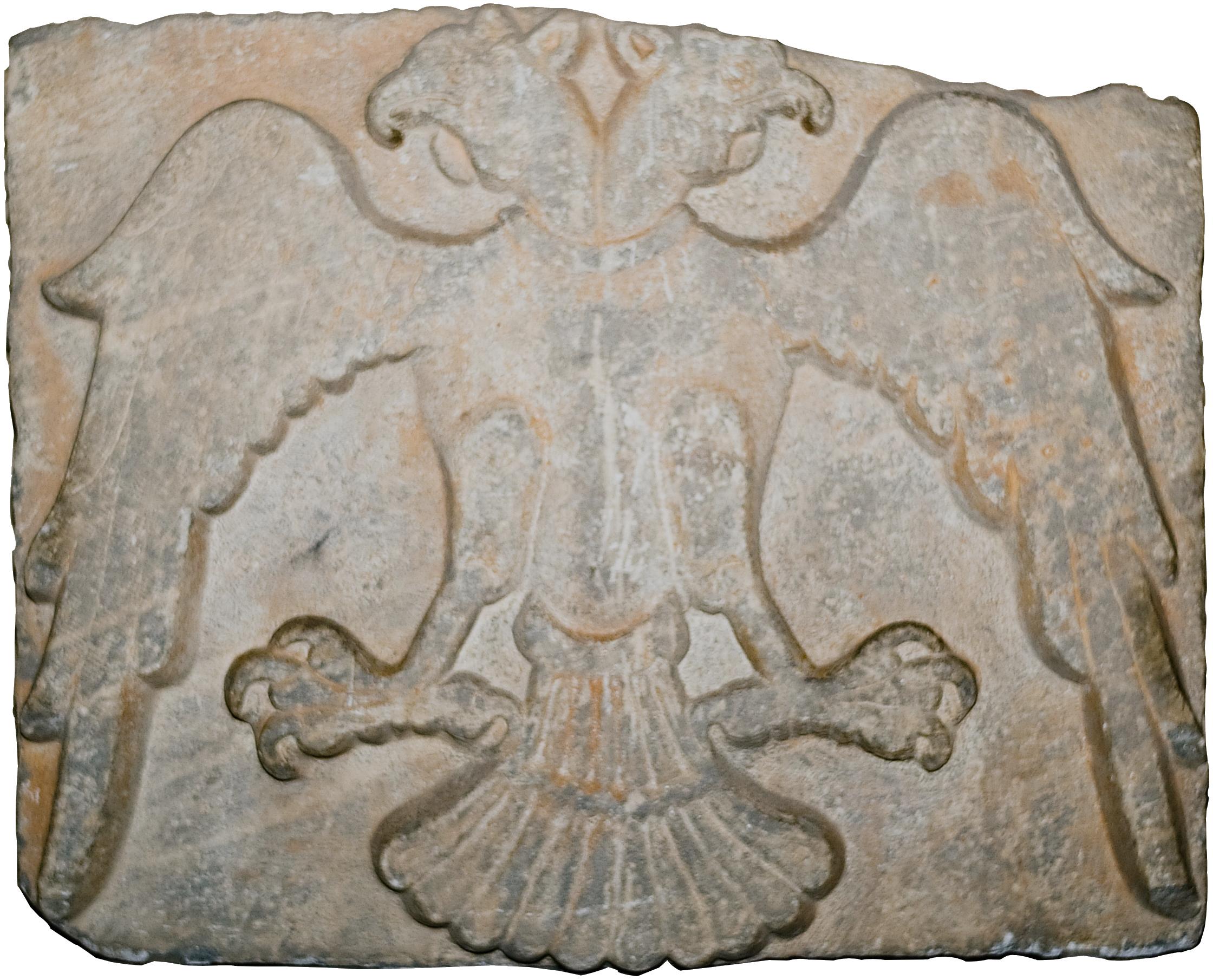
A double-headed eagle relief in Ince Minare Museum of Konya. It may have been used as "personal insignia" by Kayqubad I (r. 1220–1237). Inspiration of Rum Sultanate's faction flag.
Photo Source: Fabien Dany - www.fabiendany.com
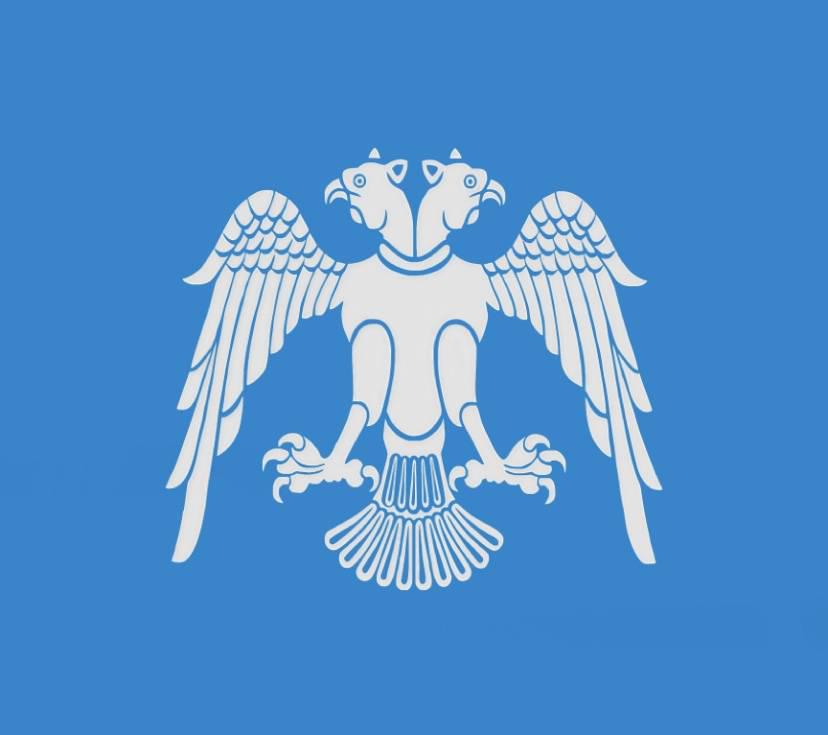
Faction flag of Rum Sultanate in INJ2
In A.D. 1071, the Seljuk Sultan Alp Arslan defeated Roman Emperor Romanos IV Diogenes in the Battle of Manzikert, capturing most of imperial provinces in Asia Minor. After this battle, Turkomans from different regions such as Fars and Khorasan, migrated into Asia Minor in large numbers. Amongst commanders who led the Turkoman tribes, was a man named Suleiman. It was he who built the Sultanate of Rum afterwards.
Suleiman was the son of Qutalmish, a member of Seljukid house. Qutalmish was the cousin of Tughril, the first Seljuk Sultan. He used to rebel against Tughril and contend with Alp Arslan, nephew of Tughril for the throne, but this ended in his defeat and death. According to a semi-legendary tradition, Suleiman was held in captivity until Malik-Shah took over the throne. The new Sultan's distant cousin succeeded in escaping to the southern region of Anatolia.
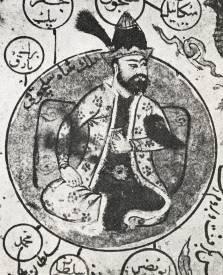
Seljuk Sultan Malik-Shah (r. 1072-1092)
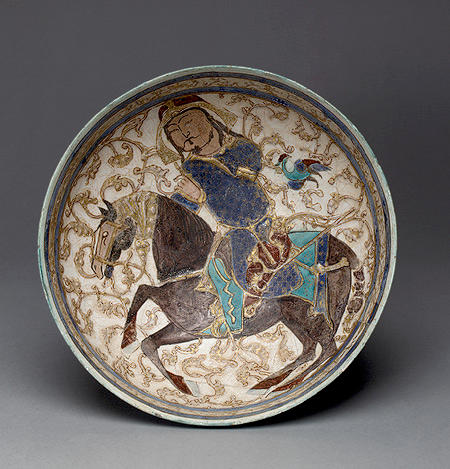
Seljuk figure in Persian-style pottery, 12th century
Turkomans gathered around Suleiman by his Seljukid standing, but they still had to fight for their new home with surrounding forces. In A.D. 1075, Suleiman led Turkoman tribes to capture Nicaea and Nicomedia in Bithynia region, north-west of Anatolia. Two years later, he declared himself the sultan of an independent state, making Nicaea the capital. In the next year, the internal turmoil of the Romans contributed to his fortune. Nikephoros III Botaneiates, general of Anatolic Theme, revolted against Michael VII Doukas. The emperor appealed to Suleiman against Nikephoros. Suleiman did intercept the rebel forces at first, whereas Nikephoros persuaded him to join the rebellion with better rewards. After a thought, Suleiman decided to help the insurgents to enter Constantinople and let Nikephoros III usurp the throne. In return for his support, he held all the territory around the Asian shore of the Bosporus Strait. Thusly Suleimen controlled such important strategic location.

Turkoman Chief

Turkoman Ghazi (Muslim warrior or champion)
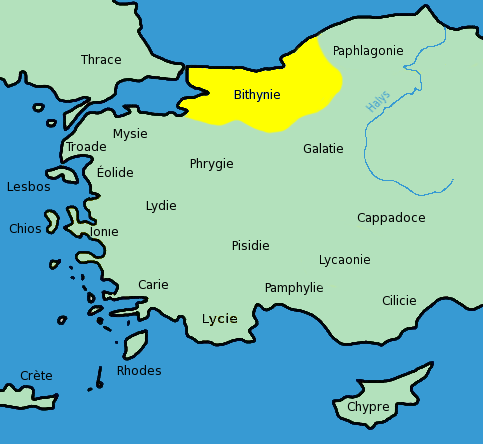
As shown in this map, the part in yellow is the Bithynia region
The newborn sultanate was instable. Despite the Seljukid lineage of Rum was a branch of the Great Seljukids, the Seljuk Sultan had no interest in seeing his dangerous cousins obtaining power of any kind, as rulers of Rum were adversaries of the Great Seljuks. In A.D. 1086, Suleiman marched East, and was killed near Antioch by Tutush, the Seljuk emir of Damascus. Suleiman's son Kilij Arslan was captured. Luckily, due to the assasination of Seljuk Sultan, Kilij Arslan was able to return to his territory. He disposed political opponents and continued to expand eastward like his father did.
But the First Crusade ended his strategy. In the beginning, Kilij Arslan thought it was just a new wave of mecenaries hired by the Romans, and the Seljuks did defeat the vanguards of Peasant Crusade. Nevertheless, when the elite troops led by European nobilities laid siege to Nicaea, the sultan realised that he has underestimate his enemy. After days of harsh campaigns against encirclement, the Suljuks were proved to be no match for the heavily armoured calvary, thus their capital is lost. Kilij Arslan retreated to the central-south of Asia Minor, and set the city of Konya as new capital to reconstruct his rule. The Seljuks would use hit-and-run tactics to harass crusaders on the way. However, the crusaders did not stay in Anatolia for too long. They soon started their conquest in Syria and Palestine, hence did not cause more major threat towards the Seljuks in Anatolia. In A.D. 1106, Kilij Arslan coveted the sultanate of Seljuk Empire, so he aggressively set off east and seized Mosul. But in the following year, he drowned in Khabur River against Seljuk army and his son Şâhinşah was captured.

Siege of Nicaea during the First Crusade
(It was painted in the 13th century, so there is huge difference from the late 11th century on the armaments)
Such drama was played all over again. After three years, Konya welcomed Şâhinşah who were released from captivity. But the circle broke down — the new sultan didn't die in combat against the Great Seljuks, but was overthrown and executed by his brother Mesud, groom of Danishmendids. Mesud is a shrewd and ambitious ruler. When he wielded power, the Danishmendids found by Turkoman in north-eastern Anatolia had already become a significant power in the area. So he revoked the truce with the Romans made by Şâhinşah, waiting for opportunity to conquer Danishmendids' territory.
During the later reign of Mesud, he managed to defeat the Second Crusade — in the second Battle of Dorylaeum (near Eskişehir) against Conrad III of Germany in A.D. 1147; and the battle near Denizli against Louis VII of France in the ensuing year. During that battle, Louis' mount was shot on the field. The king had to climb on a rock and shelter himself with a shield until he got reinforcements.
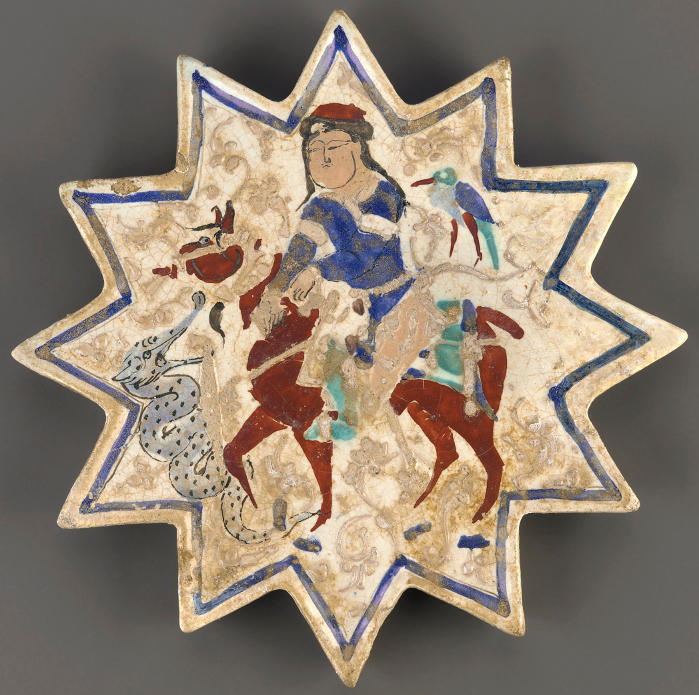
Selcuk Star, common on building decorations.
In A.D. 1156, Mesud died and his elder son Kilij Arslan II succeeded. Kilij Arslan II had to accept truce with Romans after suffering setbacks on the battlefield. And in A.D. 1174, Nur ad-Din died while Saladin did not have enough time to turn his focus on the west of Sham; it was a turn for the sultan to expand his territory. He seized Sivas in A.D. 1174 and Malatya in A.D. 1178, putting the Danishmenidids to an end in Anatolia.
On the other hand, after having solved the frontier threats in Balkan, the Roman Emperor Manuel I decided to take back the lost territory in Asia Minor. Simultaneously, the Seljuks were eager to obtain the fertile coastal land. The treaty broke down again, and Manuel set out his grand army towards Konya in A.D. 1176. Sultan was in panic, and he even offered conversion to Orthodox for peace. But Manuel refuses the offer, as he thought the mighty army would crush the Seljuks and took back whole Anatolia once for all.
Nevertheless, the imperial army was ambushed in Myriokephalon near Akşehir. The battle was fought in the narrow valley and most siege-works were lost, so the Romans couldn't manage to capture the fortresses held by Seljuks. Despite the battle in Meander Valley gave a victory for Romans in the year ensuing; the death of Manuel I in A.D. 1180 marked as the decadence of the empire. After this event, the Seljuks had strengthened their control over Anatolia.
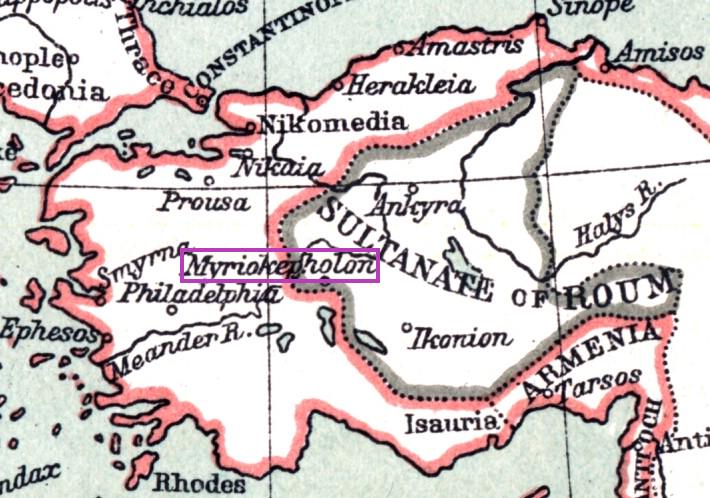
Anatolia in 1180 (four years after the battle) showing Myriokephalon in Seljuks' control

Expansion of the Sultanate of Rum after setting Konya as the new capital
Distributing land for sons was tradition for Seljuks. Kilij Arslan II had to face such problem in his evening of life. In fact, when he succeeded the sultanate, he only had the title of Konya and authority in Elbistan. Internally, he had been challenged by two brothers as well as two grooms from Danishmendids. He utilised his political and diplomatic abilities, which grant him a successive expansion in Asia Minor; this able him to survive between great powers from both sides. But the domestic situation was unclear, as he had eleven sons without determining the heir.

The manuscript of the Romance of Varka and Gülşah in the Topkapi Palace Library, drawn by 'Abd al-Mu'min al-Khuyi in Konya in the early 13th century
f.20/20a Gülşah (right) disguised as a man, watches as her lover Varka (centre) and his rival Rabi fight on horseback.
It is the oldest extant and the only intact manuscript from the Seljuks. It showcases the Seljuk armaments and clothing at that period, and it is a valuable source for research in Seljuk history.

Seljuk Melik
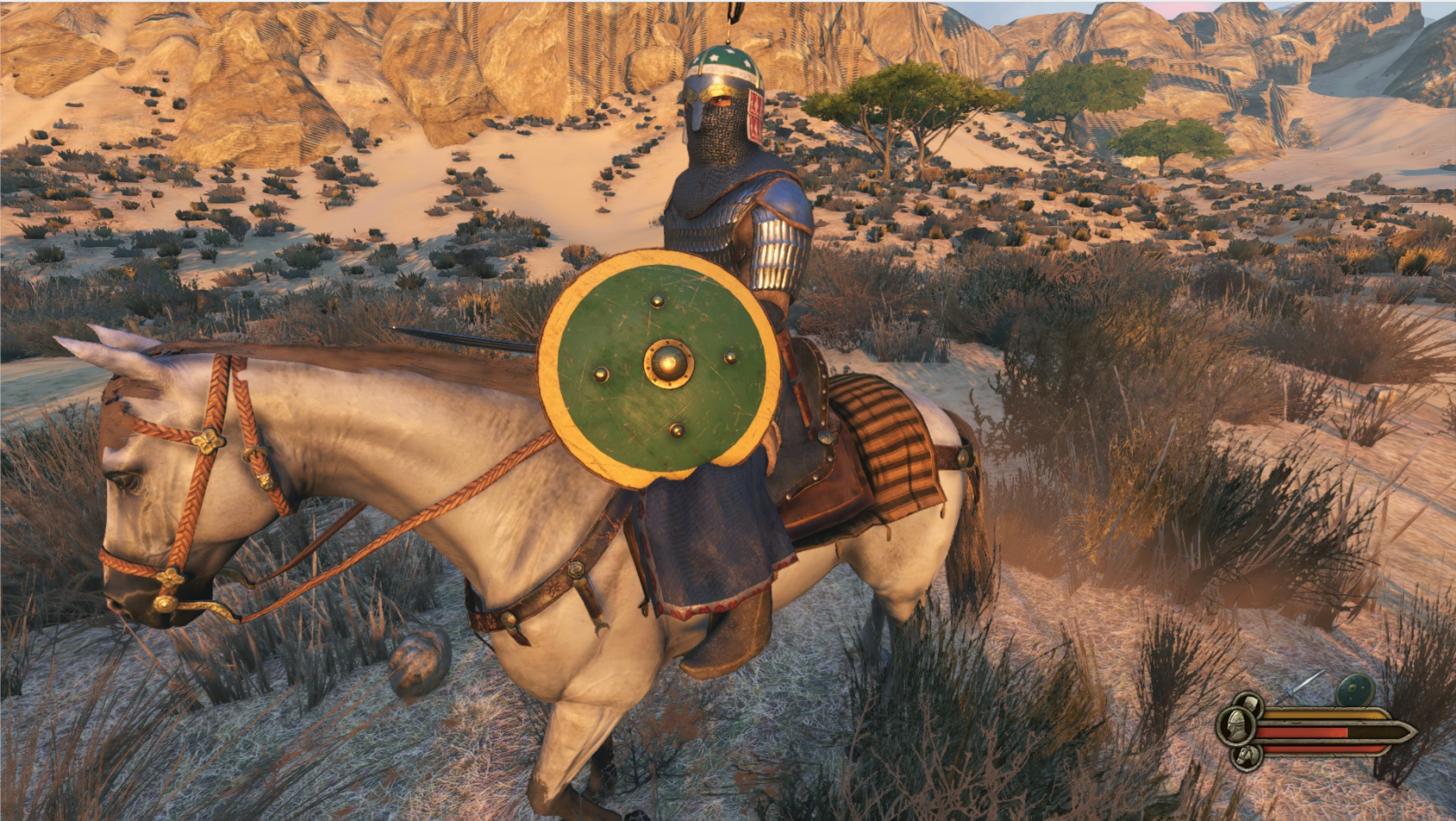
Ghulam
In A.D. 1186, Kilij Arslan II distributed the land and autonomised to all sons as melik (originally means ruler of a tribe or kingdom). He still kept the title of sultan for himself and had his reclusion in Konya. However, his sons soon began to struggle for succession. These meliks even manufactured their own coins. When the Christian force once appeared on the horizon again, will the Sultanate of Rum manage to survive in this simmering?
Anatolian Seljuks need a hero to reunite them;maintain the dominationand extend their power beyond the peninsula!



Seljuk Turk used Sultan, Emir, Khan & Atabey/Bey, instead of Melik
Malik was used by Arabs in Egypt, Arab Peninsular, Mesopotamia in conjunction to Caliph, Sultan, Emir, Sheikh
And by Ghorid and Ghaznavid Turks in Afghan & Northern India
If I recalled correctly
Yes I read.
The Seljuks definitely had the title "Melik", in the Rum Seljuk context it means royal possessor of an autonomous appanage as lord or prince subject to a supreme sovereign.
Melik is King in Arabic, and my grandfather is a Turk
I grew up learning Arabic, instead of Turk though
Yeah and Shah is King in Persian, and there was a Seljuk Sultan called Malik-Shah ;-P
Melikşah was his titular name though, not a title itself. His title was Sultan. Noble and ruling titles in the Selçuk Empire were Bey, Sultan and Emir. Selçuk Sultans may have been refered to as Malik but nowhere in Selçuk history was that an official title.
In the Anatolian Seljuk State in the game, the lords used the title of "Emir". The leader of the state used the title "Sultan". The title of "Malik" is mostly used in Arab states. Please make the game based on this information.
Watch Uyanis Buyuk Selcuklu.
Read history, not TV show
true bet the clothing swords bows are accurate but the events are fake that true
Are you serious
#Facepalm. Those tv shows are terrible, not to mention the fact their depiction of Seljuks and Early Ottomans is historically inaccurate. This mod looks great as it is. So please stop.
Above all, your work should be excellent and congratulated. Resurrection Ertugrul Organization Do not take into account the comments of people who wrote the series titles such as Osman Uyanış Büyük Selçuklu. These series are purely state propaganda series. It has nothing to do with historical reality. It has nothing to do with reality, I say this as a medieval lover, curious and Turkish.
There is a source about the daily clothing of the Seljuk Turks as a pdf.
I added here.Link : Mediafire.com
Friend, The Vikings in general viewed as benchmark of historical TV series. Still it made King Alfred the Great illegitimate son of a priest. They made Rollo the Walker uncle of Ivar the boneless (he lived 80 year after Ivar the Boneless if i remember correctly). They made Rollo kill his men (if normans had viking ancestery where did it come from?).
No historical TV serie is historically accurate. Unless it butchers character of a historical figure (for example making Hitler a humaniterian) or butchers history itself (for example making Nazi Germany win ww2) it is fine.
By the way, theese series telling Muslim side of the story. They contain propaganda as much as any holywood movie (that one is personal oppinion but i can say spesifically Uyanış and Resurrection contains a lot less propaganda then holywood movies, well excluding Kingdom of Heaven :) ). And if i have to choose one, i prefer my own "propaganda".
The depiction of Seljuks/Early Ottomans in those TV shows is historically inaccurate. Would you please stop telling developers to depict Seljuks like the way Diriliş and Uyanış do.
PS: I'm Turkish.
I would like to recommend this as a War Music proposal Youtu.be navigating the map Youtu.be Youtu.be
Thank you for your information and recognition of our work :)
this is soo epic, i generally didnt have an idea of how the selcuk armory looked.
there are another projekt called anno domini 1066, maybe you could work with them to have a greater area than the midleeast.
i love the historical accurrasy, keep up the great work
Thank you for your proposal, my friends. I'm also very interested in their project, which is one of the mods I'm looking forward to most. But I don't have enough confidence in our ability. If we can do a good job in this area, I will be very satisfied :P
by the way, didnt the selcuk have a bow on their to-headed eagle flag?
According to our finding source, no. Like the relief show in this blog.
There was a bow and arrow on the flag of the Seljuks, which is the symbol of the Seljuk dynasty. That's why they always claimed the Seljuk throne. in a way, it is a symbol of loyalty to the dynasty for them. I'm looking forward to your mod, it would be great if you have a chance to add the great seljuk sultanate
You guys sound like you know WAY too much about this. haha gonna be awesome, thanks for all your hard work and dedication, it will for sure pay off!
I want help if possible
I want the names of at least 13 military commanders or lords belonging to the Sultanate of rum who were alive in 1212.
Thanks! But our campagin start at 1187AD, do you know about this period?
Please make real names to Anadolu Selçukluları . i dont wanna see arabic words like mal-ik shah etc. do Melikşah not Mal-ik sahah. They are not arab they are Turks